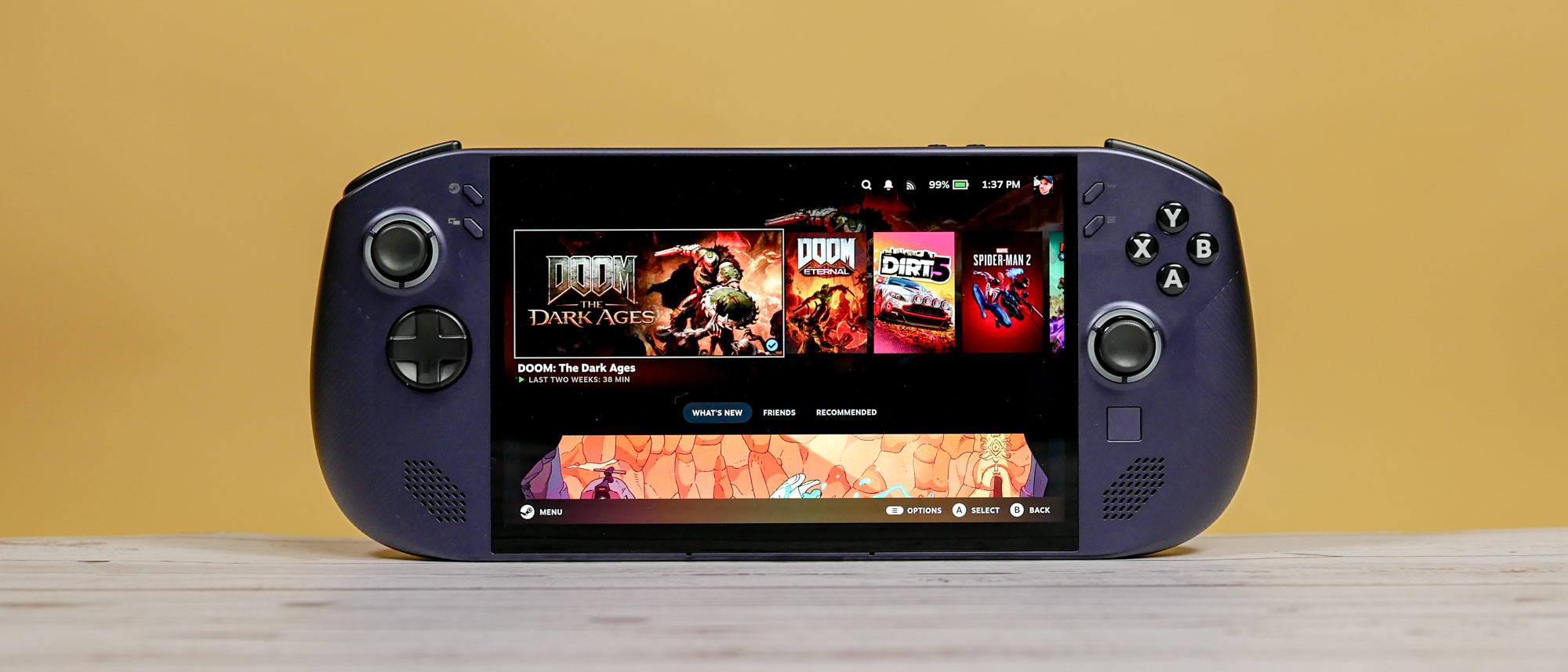Tom's Guide Verdict
The Lenovo Legion Go S with SteamOS is a true Steam Deck rival and arguably puts Windows 11 handheld to shame thanks to its snappy interface and strong performance. While its fans can get overly loud and its battery life isn’t great, SteamOS alone makes up for any shortcomings.
Pros
- +
Snappy and intuitive SteamOS interface
- +
Vibrant display
- +
Comfortable, ergonomic design
- +
Strong gaming performance
Cons
- -
Loud fans
- -
Poor battery life
Why you can trust Tom's Guide
The Lenovo Legion Go S with SteamOS ($599 to start) is the gaming handheld I’ve been waiting for. While Windows 11 works well on the best gaming PCs and best gaming laptops, Microsoft’s operating system hasn’t really benefited the best handheld gaming consoles.
We now finally have a non-Steam Deck handheld running on SteamOS, and it’s better than I could have imagined.
The main difference between this and the Lenovo Legion Go S I reviewed earlier this year is their respective operating systems. Besides that, this model has the same design but in a different color. It also has an 8-inch (1,920 x 1,200) 120Hz LCD, trigger locks for the L2 and R2 buttons, and a rounded D-pad.
I’ve used this handheld for nearly a month, and can confidently say it crushes its Windows 11 counterparts on usability alone. But thanks to the improved performance provided by the lean operating system and our review unit’s AMD Z1 Extreme chip, we now have the first true Steam Deck rival.
While the Legion Go S with SteamOS might not offer the freedom of Windows 11 or the wallet-friendly price of a Steam Deck, it’s a phenomenal gaming handheld that sets these devices on a trajectory I’ve longed for. Find out why in my full Legion Go S review.
Lenovo Legion Go S (SteamOS) review: Cheat sheet
- What is it? A Lenovo Legion Go S model that runs on SteamOS instead of Windows 11.
- Who is it for? For folks who want a gaming handheld that doesn’t run on Windows 11 and is as easy to use as the Steam Deck.
- What does it cost? Both models of the Legion Go S start at $599 at Best Buy and pack an AMD Z2 Go chip, 16GB of RAM and 512GB of storage. Our review unit costs $829 and features an AMD Ryzen Z1 Extreme chip, 32GB of RAM and 1TB of storage. The Legion Go S with Windows 11 has the same hardware specs as our review unit but costs $899.
- What do we like? We like the snappy SteamOS, ergonomic design and strong gaming performance.
- What don’t we like? We don’t like the handheld’s noisy fans and poor battery life.
Lenovo Legion Go S (SteamOS) review: Specs
Lenovo Legion Go S (starting) | Lenovo Legion Go S (tested) | |
Price | $599 | $829 |
Display | 8-inch WQXGA (1920 X 1200) LCD 16:10 | 8-inch WQXGA (1920 X 1200) LCD 16:10 |
Chipset | AMD Ryzen Z2 Go | AMD Ryzen Z1 Extreme |
Storage | 512GB | 1TB |
Memory | 16GB | 32GB |
OS | SteamOS | SteamOS |
Ports | 1X Micro SD card slot, 2X USB-C, 1X headphone jack | 1X Micro SD card slot, 2X USB-C, 1X headphone jack |
Dimensions | 11.77 x 5.02 x 0.88 inches | 11.77 x 5.02 x 0.88 inches |
Weight | 1.63 pounds | 1.63 pounds |
Colors | Nebula | Nebula |
Lenovo Legion Go S (SteamOS) review: The ups
SteamOS is the Lenovo Legion Go S’ primary selling point, but it also offers strong performance and an excellent display in an ergonomic design.
SteamOS interface
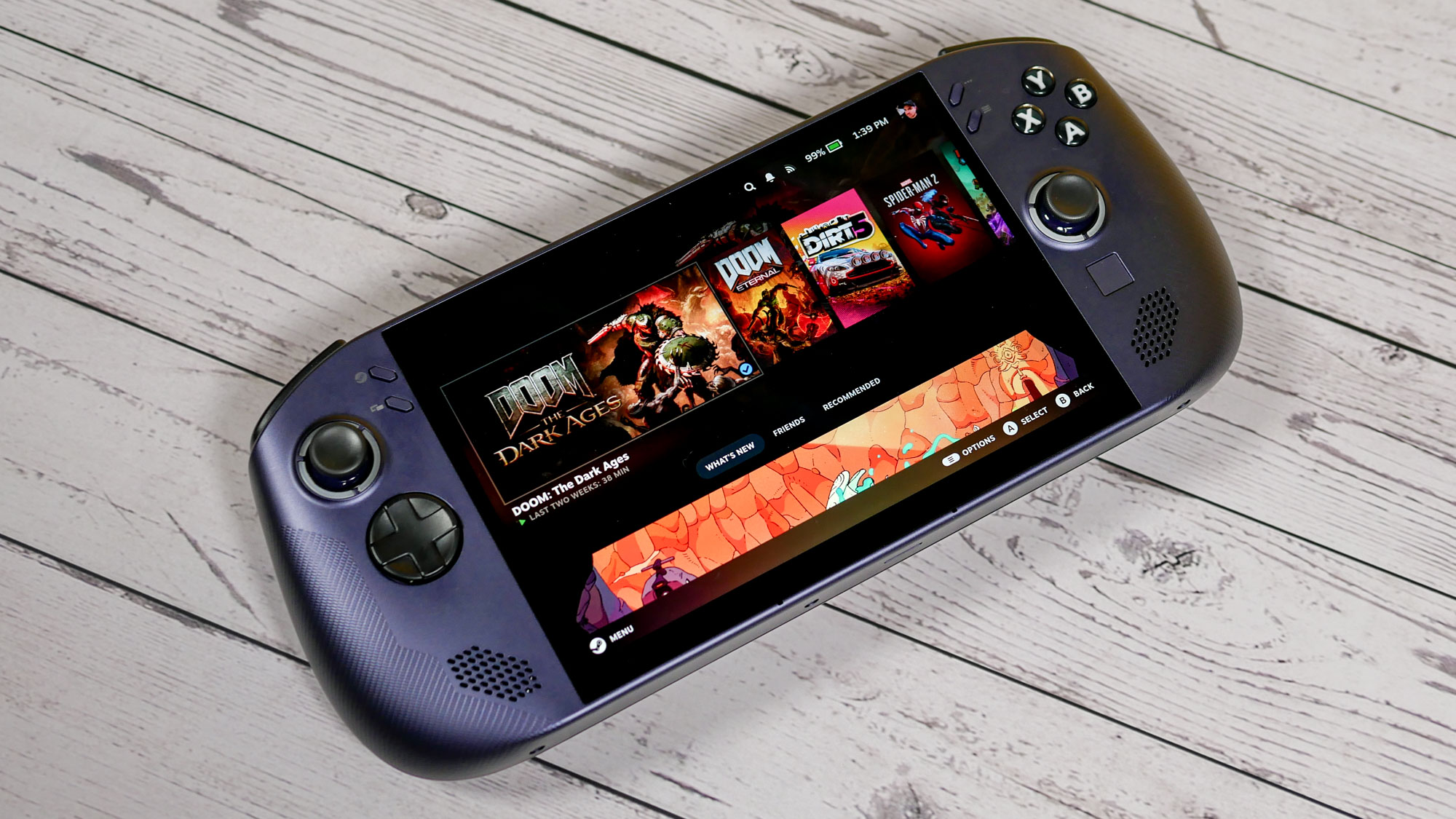
Let’s start with this handheld’s main draw: SteamOS. Since this operating system is specifically designed for handheld controls and doesn’t have all the bloat of Windows 11, it’s easy to navigate its menus and jump into your games.
Get instant access to breaking news, the hottest reviews, great deals and helpful tips.
I’ve been reviewing Windows 11 handhelds for so long that I had almost forgotten how fast setting up a machine with SteamOS can be. I was up and running in less than five minutes, and that includes the time spent updating the firmware. That’s something unheard of with Windows-powered handhelds.
If you own or have used a Steam Deck, then you’ll feel right at home since the layout and menus are exactly the same. Like Valve’s handheld, you’ll have little trouble navigating through the menus or accessing your game library, the Steam Store, your friend list, downloads and settings.
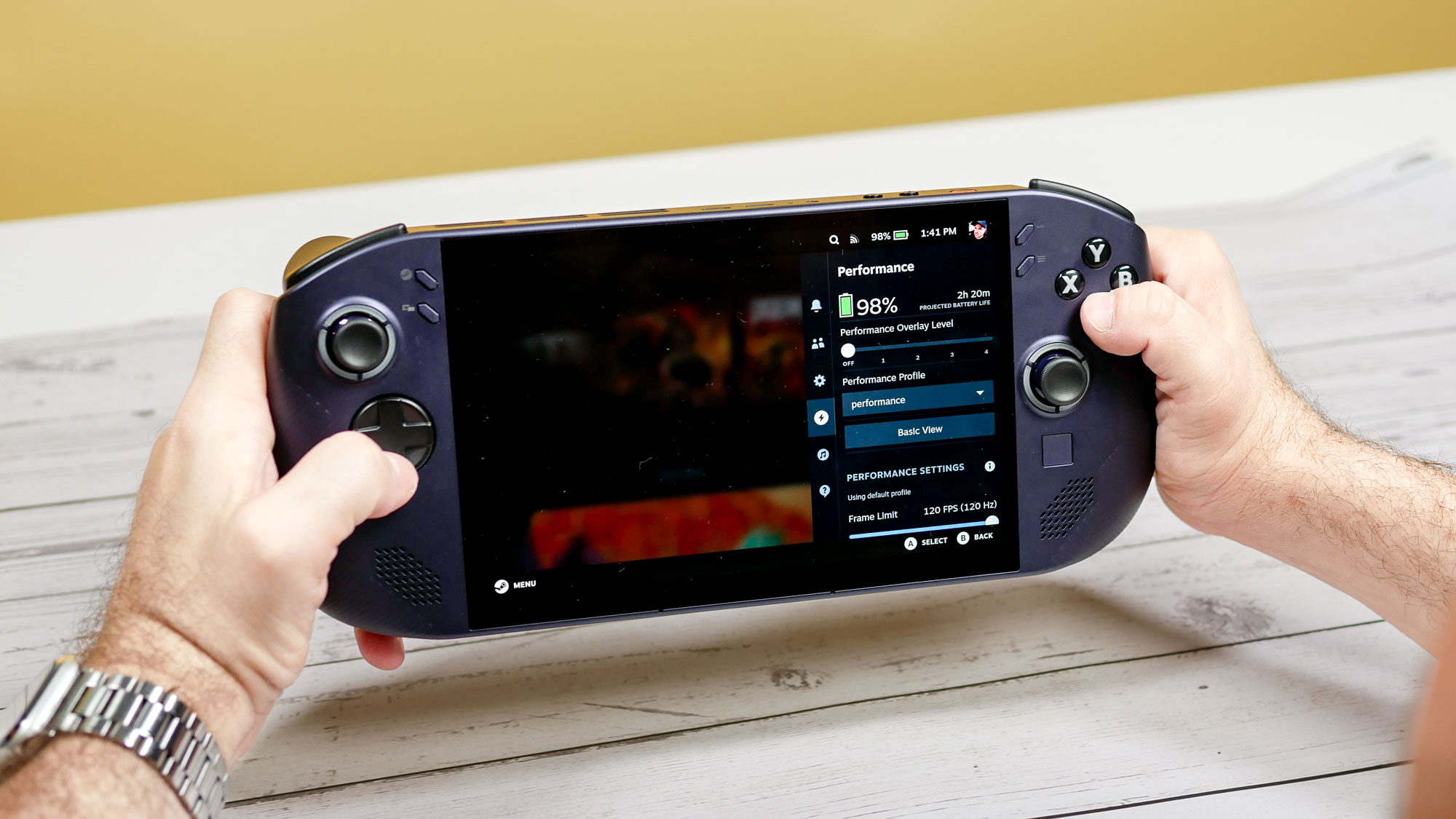
Pressing the Steam button on the left-hand side brings up the same settings you’d find on Steam Deck. You can see your notifications and adjust settings like brightness, speaker volume and controller rumble. As before, you’re able to set the frame rate limit, select the refresh rate, thermal power limit (TDP) and scaling filter. An assortment of other options lets you configure the Legion Go S to your exact liking.
I could keep gushing about SteamOS, but suffice it to say that it works just as beautifully on the Legion Go S as it does on the Steam Deck.
Vivid display
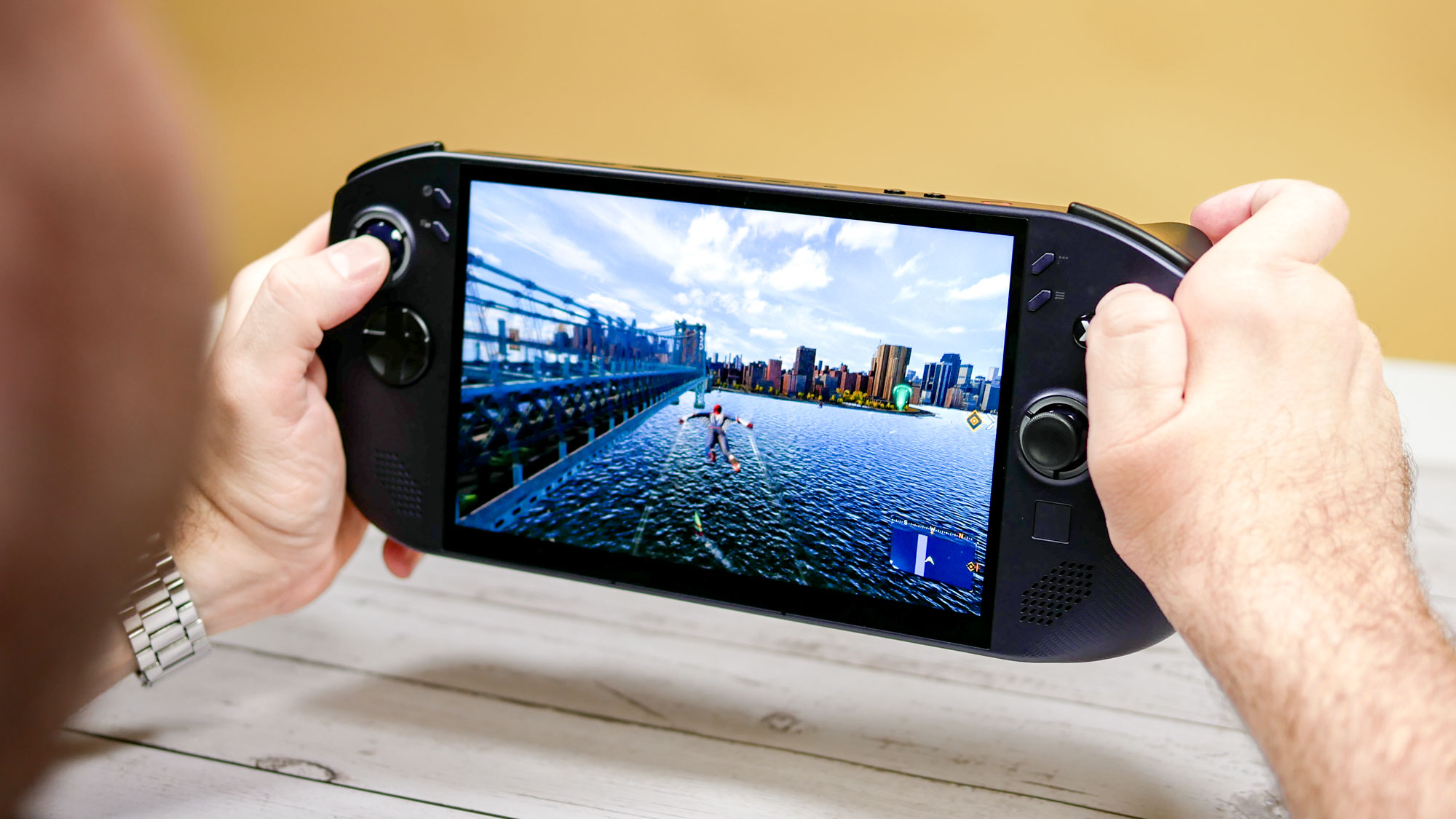
The 1,920 x 1,200-pixel 8-inch LCD is identical to the previous model. I have no trouble making out all the small details in games like Doom: The Dark Ages and Cyberpunk 2077. Colors are nice and vibrant, and overall brightness is also pleasing to the eye. The 120Hz refresh rate also ensures everything runs buttery smooth.
We ran the Legion Go S through our display benchmarks and can confirm its panel is virtually identical to the Windows 11 model. The new Legion Go S can get quite bright, and its color reproduction (sRGB and DCI-P3) isn’t too oversaturated. Color accuracy (Delta-E) isn’t as good as before (closer to 0 is best here), but it’s not a stark difference.
| Row 0 - Cell 0 | Lenovo Legion Go S (SteamOS) | Lenovo Legion Go S (Windows 11) |
Nits (brightness) | 441 | 455 |
sRGB | 116.3% | 119.7% |
DCI-P3 | 82.4% | 84.8% |
Delta-E | 0.33 | 0.24 |
One of my biggest problems with the original Legion Go is that games running at anything lower than its native 1080p can look murky on the 8.8-inch display. Since the Legion Go S has a smaller screen, most games can still look good even at 800p. That’s not to say they look sharp, but the visual difference isn’t as striking as it would be on a larger display.
Strong performance
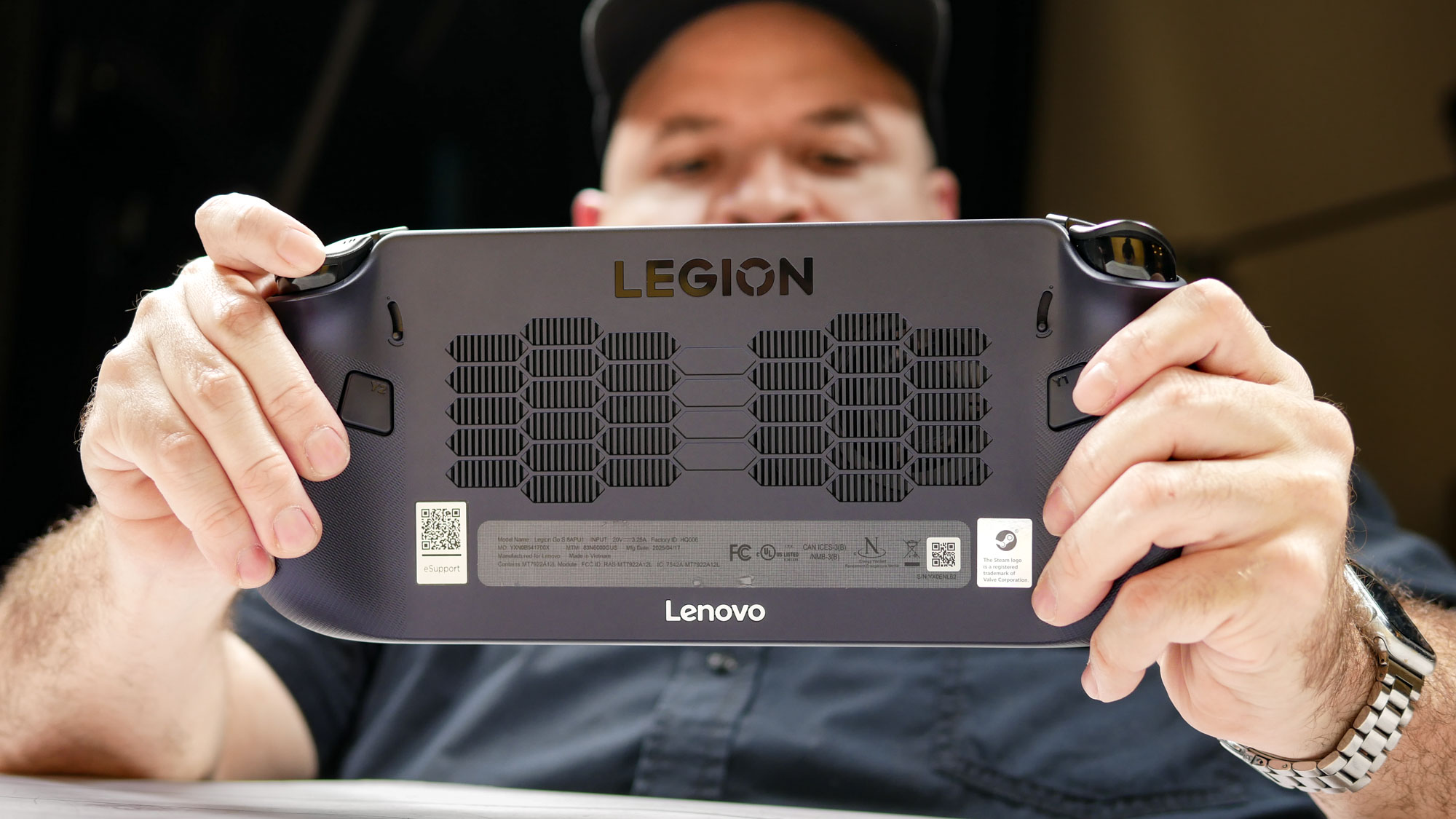
Our SteamOS Legion Go S review unit packs an AMD Ryzen Z1 Extreme chip and 32GB of RAM. Thanks to that, it offers stronger performance than the Windows 11 Legion Go S I reviewed. However, keep in mind that the latter runs on the weaker AMD Z2 Go chip and has 16GB of RAM.
For my testing, I played Doom: The Dark Ages on the new Legion Go S. At 1200p resolution, medium graphical settings and with FSR (frame generation) disabled, The Dark Ages can run at around 25 frames per second. With FSR enabled, the fps jumps to 35. I got a smooth 56-61 fps at 800p resolution with FSR, though the game doesn’t look so good at this lower resolution.
The Legion Go S with Windows 11 didn't do quite as well. Doom: The Dark Ages ran at an abysmal 15 fps at 1200p and medium settings. Enabling frame generation bumped the fps count to 27, which is better but still not great. I got a decent 45 fps at 800p resolution with FSR on and graphical settings at low. However, the image quality looked muddy at those settings.
| Row 0 - Cell 0 | Legion Go S (SteamOS) | Legion Go S (Windows 11) |
Assassin's Creed Mirage | 32 | 21 |
Dirt 5 | 32 | 20 |
Shadow of the Tomb Raider | 39 | 16 |
For our lab tests, we ran the in-game benchmark tool for a handful of titles at maximum graphical settings. As you can see in the table above, the SteamOS Legion Go S trounces its Windows 11 counterpart across the board.
Ergonomic design
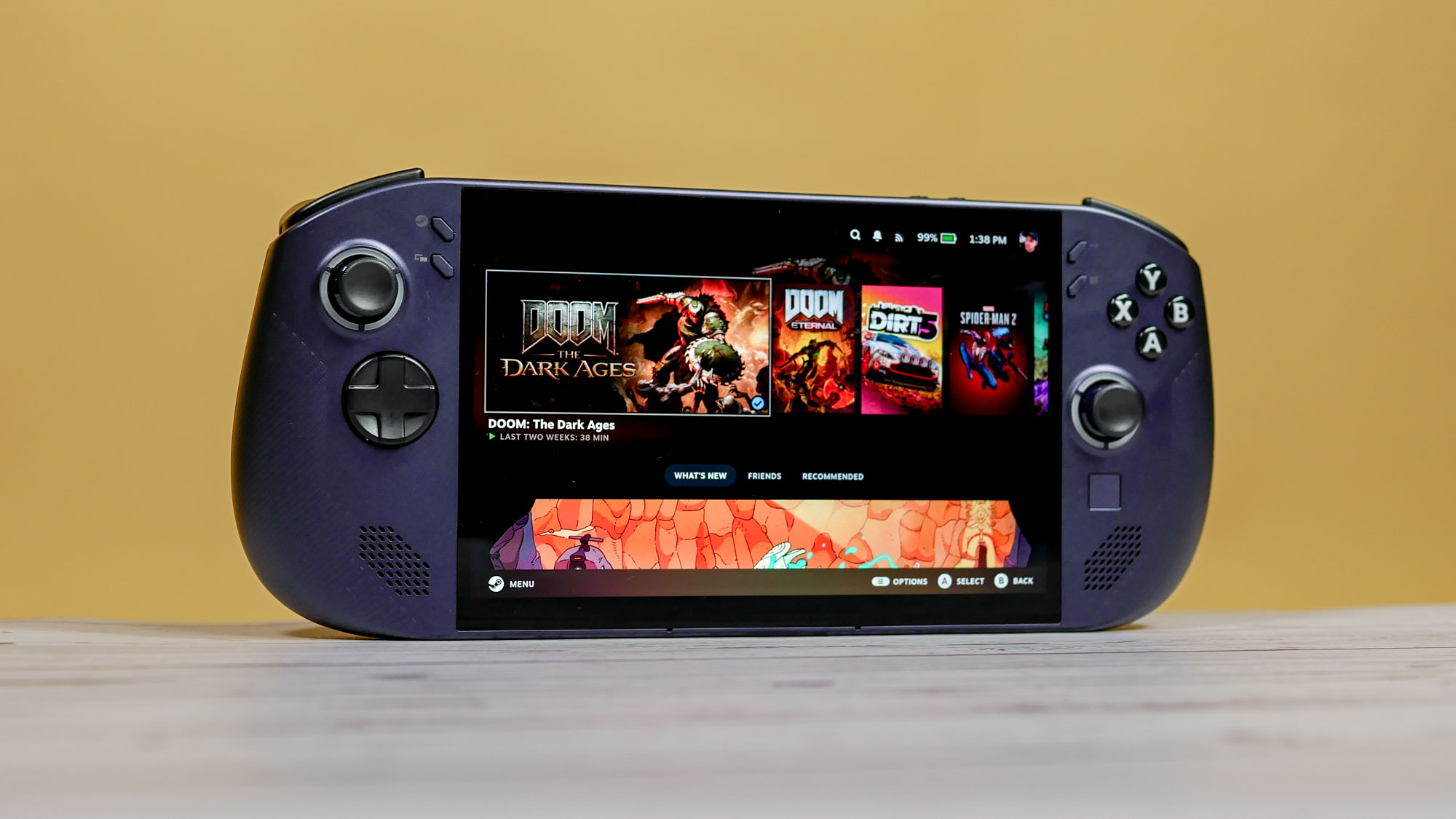
Other than its Nebula (dark) color, the SteamOS Legion Go S has the same design as its Glacier White Windows 11 counterpart.
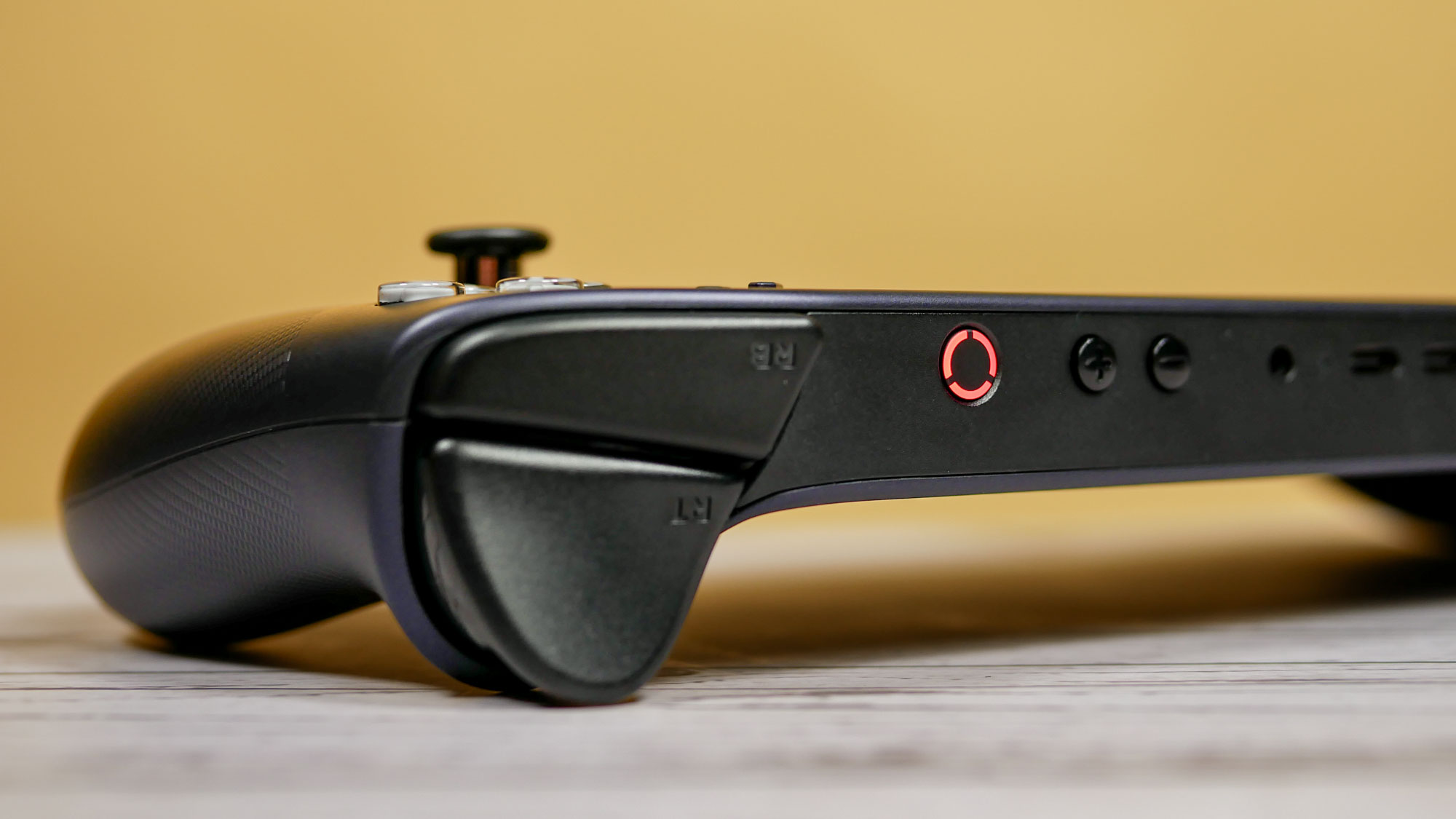
As before, this handheld ditches the removable controllers of the Legion Go and instead has a uniform body design that’s similar to the Asus ROG Ally X. It’s comfortable to hold thanks to its ergonomic design, grippy corners and smart button placement.
The asymmetrical Hall Effect analog sticks and the rounded D-Pad are as responsive as the face and shoulder buttons. I also like that L2 and R2 have trigger locks to set their actuation points, which can be beneficial for first-person shooting games.
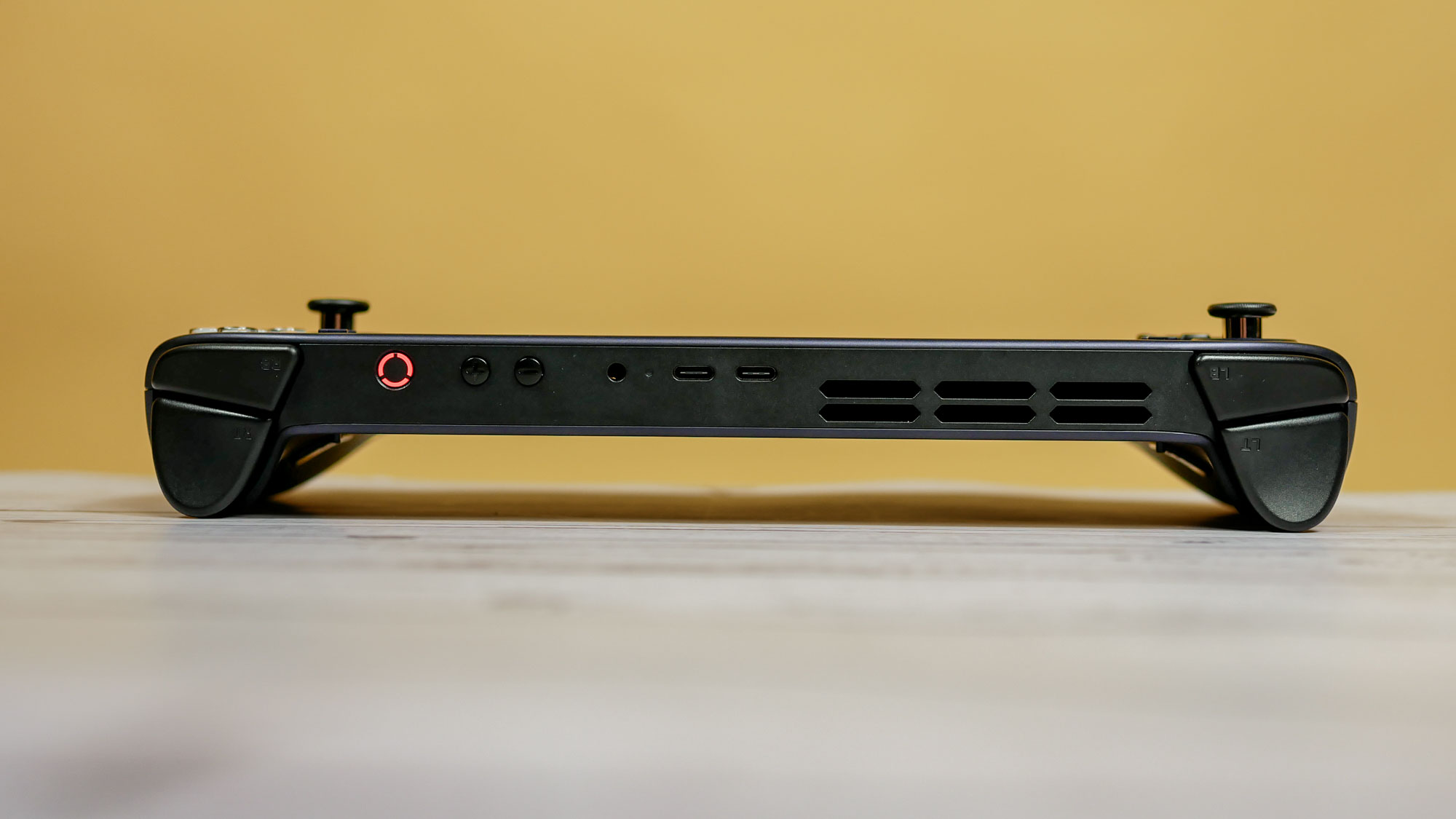
Overall, this system is a joy to hold and play with. It’s also fitting that this system has a darker, Steam Deck-like color since it runs on SteamOS.
Lenovo Legion Go S (SteamOS) review: The downs
SteamOS alone makes the Legion Go S a fantastic device, but it has the same flaws as other handhelds.
Middling battery life
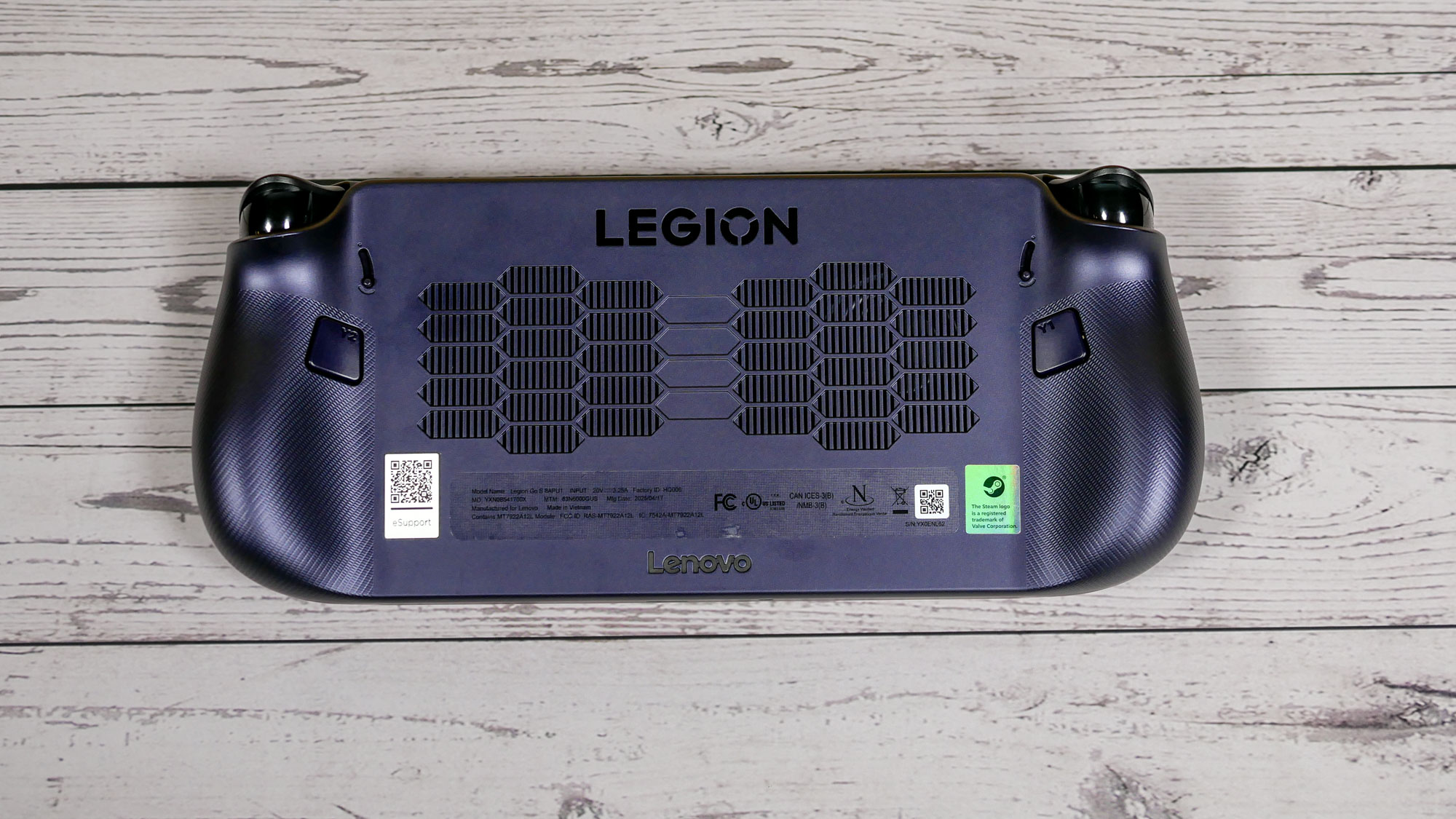
Gaming handhelds generally have battery life comparable to gaming laptops, which can range from one to two hours at most. Unfortunately, the Legion Go S doesn’t buck this trend. If you plan on traveling with this device, don’t forget to bring its 65W AC adapter.
Since this machine runs on SteamOS, we weren’t able to conduct our usual slew of battery life tests. To that end, I fired up Doom: The Dark Ages with the display set to 1200p resolution and selected performance mode to get the full 30W TDP. It took about an hour and a half before I got a battery life warning.
While it’s disappointing that this machine has similar battery life to the Windows 11 model, I want to restate that the SteamOS review unit I reviewed has a more powerful processor that takes a bigger toll on battery life. If you want this machine to last longer, you’ll have to tweak some of the game and system settings, though you still shouldn’t expect more than two hours.
Loud fans
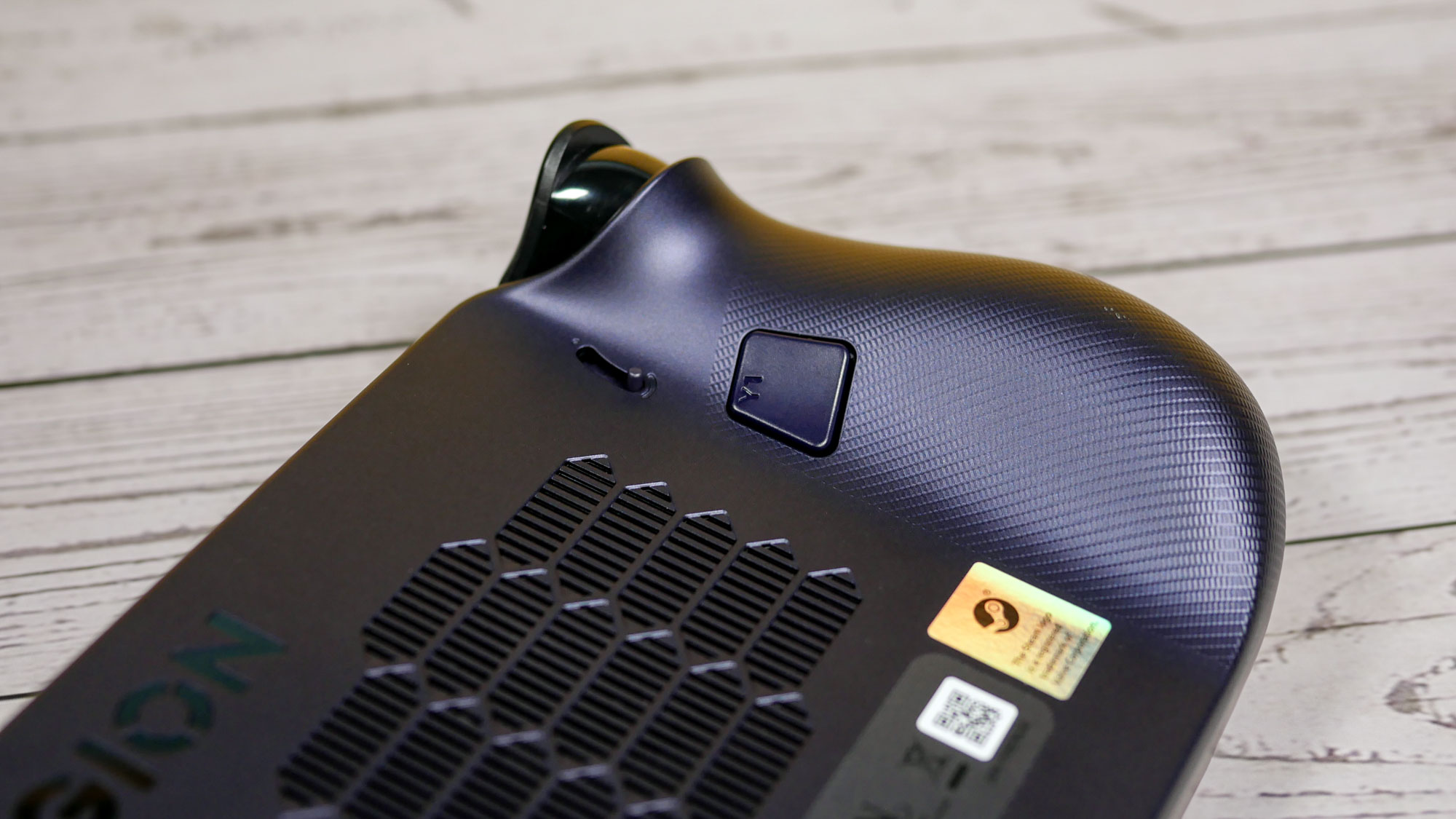
You might want to wear one of the best gaming headsets while using this Legion Go S so you can tune out its overly loud fans. Like short battery life, noisy fans are common for gaming handhelds, so Lenovo’s machine isn’t different in that regard. Still, having fans screaming at you while you’re doing simple things like downloading and installing games can get grating.
Though I’m not a fan of the loud fans, they do an excellent job of keeping the handheld cool. Our heat test revealed that the underside, where the majority of the air vents reside, reaches 83 degrees. That’s a little warm, but considering your fingers aren’t too close to these vents, it won’t be an issue. Overall, the Legion Go S remains relatively cool to the touch.
Lenovo Legion Go S (SteamOS) review: Verdict
I once said I wanted a handheld with the ROG Ally X’s specs that ran on SteamOS. I’m happy to say the Lenovo Legion Go S is literally what I’ve asked for. Unless we see a SteamOS-powered handheld with an AMD Ryzen Z2 Extreme chip released this year, I’m confident in saying this will be my favorite handheld of 2025.
If you own a Steam Deck and are happy with it, then you don’t need to upgrade to this Legion Go S. Similarly, if SteamOS is too limiting, then you might be better off with a Windows 11 handheld like the first Legion Go S.
The Lenovo Legion Go S with SteamOS heralds a brighter future for gaming handhelds and is a fantastic device in its own right. If you’ve considered buying a handheld but didn’t know which one to get, this is the one for you.

Tony is a computing writer at Tom’s Guide covering laptops, tablets, Windows, and iOS. During his off-hours, Tony enjoys reading comic books, playing video games, reading speculative fiction novels, and spending too much time on X/Twitter. His non-nerdy pursuits involve attending Hard Rock/Heavy Metal concerts and going to NYC bars with friends and colleagues. His work has appeared in publications such as Laptop Mag, PC Mag, and various independent gaming sites.
You must confirm your public display name before commenting
Please logout and then login again, you will then be prompted to enter your display name.
